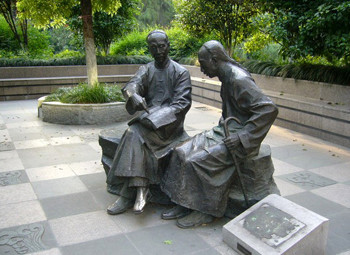(Ecns.cn)--As one of the public arts, urban sculpture is an effective way to encapsulate the history and culture of a time or place. As such, sculptures help us symbolize and remember the places we have visited: the iconic Statue of Liberty never fails to evoke the city of New York, for example.
China has a long history of making sculptures, such as the Terracotta Warriors, which are known as a must-see for visitors hoping to glimpse the old China. But the history of modern urban sculpture here is only about 100 years old, and in need of further reform, according to experts.
Imported influence
At the beginning of the 20th century, the Opium Wars opened the doors of old China. Although the cannons and guns brought drug addiction and war to the closed country, they also helped introduce its people to a new form of art.
During that time many western sculptures were built in cities like Shanghai, Guangzhou and Hong Kong, marking the start of modern urban sculpture in China. And though the sculptures in some sense embodied a history of humiliation for the Chinese people, they also inspired young Chinese artists.
During the May Fourth Movement in 1919, progressive Chinese sculptors like Liu Kaiqu, Zheng Ke and Wang Jingyuan began to make commemorative sculptures to express anti-feudalist ideas. From then on, a group of sculptors began devoting themselves to illustrating their willingness to save the nation.
After the foundation of New China, urban sculpture began to play a vital role in the development of cities, and many works lauding hardworking people and the development of the country were displayed in urban areas.
Most of those sculptures were influenced by the art of the former Soviet Union, and represent the period when China had very close ties with that country.
In the 1980s, urban sculpture in China entered a period of rapid development. Along with the progress of technology, science and the economy – and a greater understanding of urban sculpture from the western world – multiple new styles began to bloom here.


















